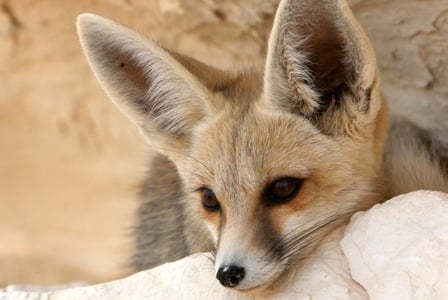
Learn about the fennec fox, a desert canine whose cuteness has made it a controversial commodity in the exotic pet trade.
Looking for your daily dose of cute? Look no further than the fennec fox. It’s no secret that this desert dweller, with its huge batlike ears and tiny catlike body, is adorable. Unfortunately, fennec fox populations are shrinking—in part because they’re such a hot commodity in the pet trade.
Habitat: the sandy deserts of northern Africa.
Trivia
- The fennec fox is the smallest fox in the world.
- Those huge ears aren’t just for looks. They act as radiators to help fennec foxes beat the heat.
- Their sensitive hearing also allows them to detect prey as small as an insect crawling underground.
- Meanwhile, the foxes’ long, thick fur enables them to stay warm during chilly nights. Their sandy colouring is also ideal for blending in with desert landscapes.
- Couples mate for life and live with their pups in family units of 10 or so individuals.
- Fennec foxes are opportunistic omnivores that will snack on whatever prey is available. The bulk of their diet is made up of insects, but they also munch on small rodents, birds, and desert plants such as dates.
Why are they threatened?
No detailed population data on fennec foxes is available; however, they’re known to be fairly abundant across their northern African home. The IUCN has classified fennec foxes as a Least Concern species to show that the foxes’ populations are widespread, but more research into their conservation status is needed.
Like other cuddly-looking critters, the fennec fox is highly sought after as a pet. Although these wild beasties are best appreciated from afar (for example, by viewing cute pictures of them online), this hasn’t stopped them from being hunted and trapped for commercial sale. The foxes’ populations are also dipping due to hunting by locals and domestic dogs.

